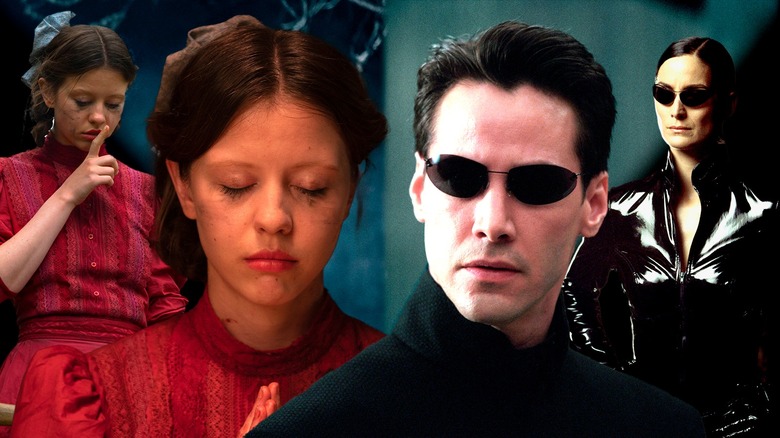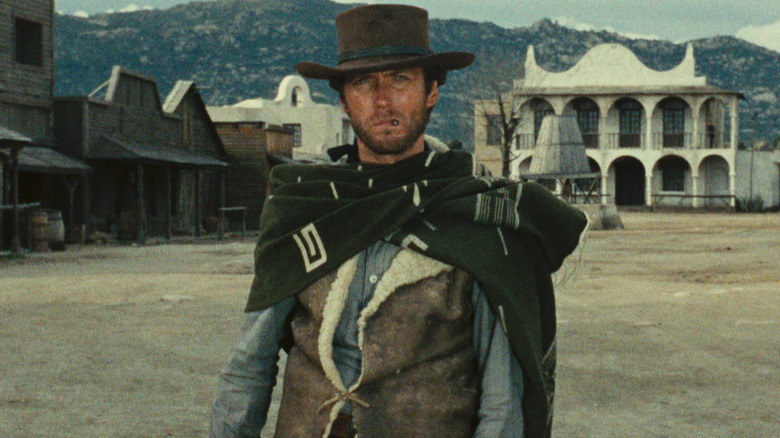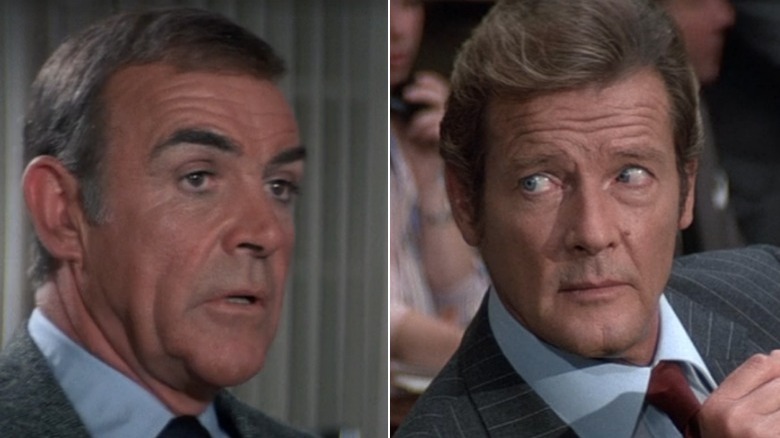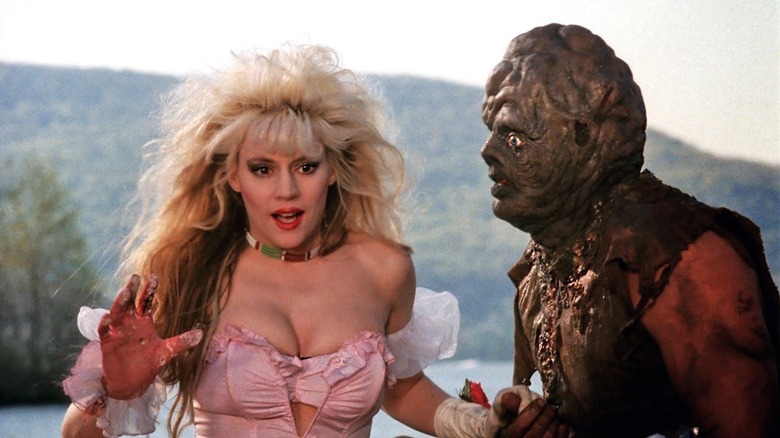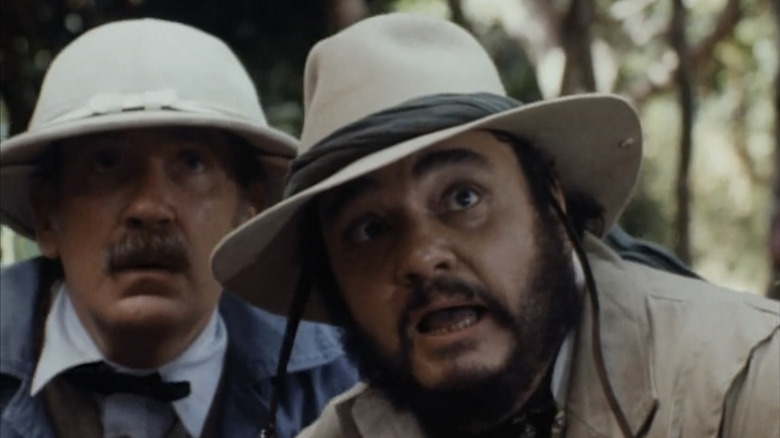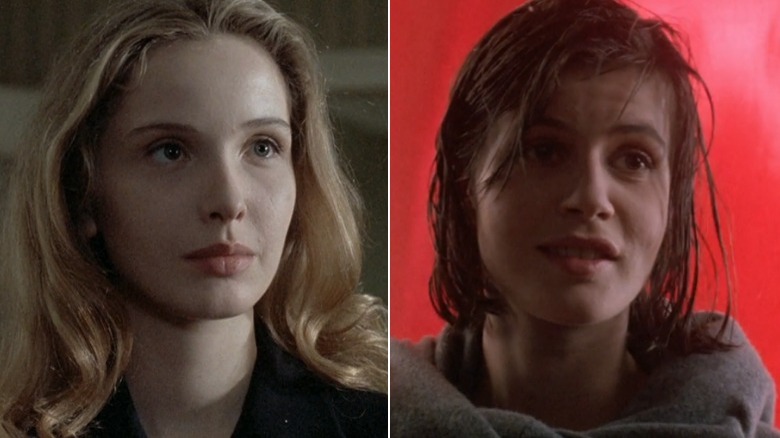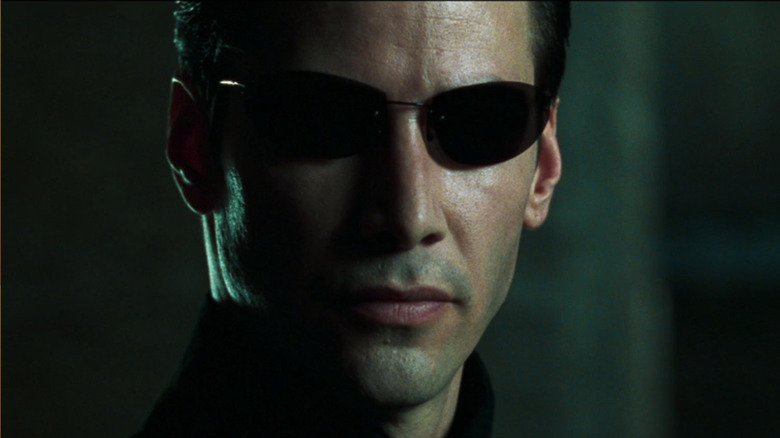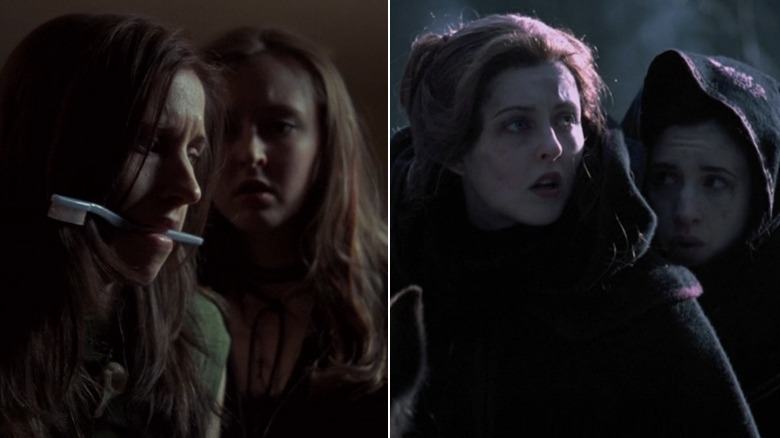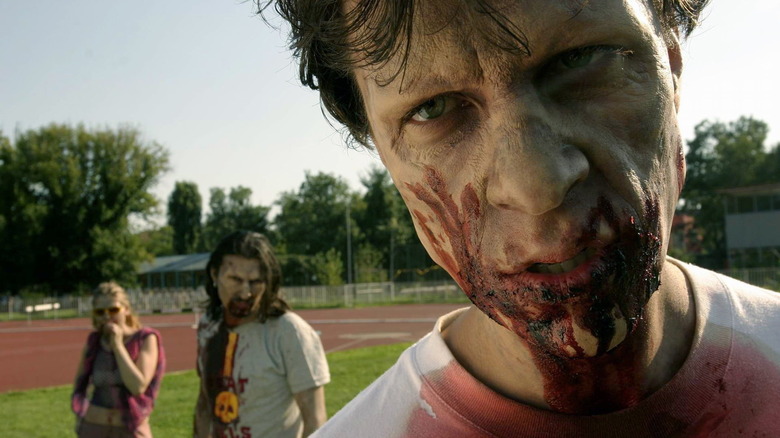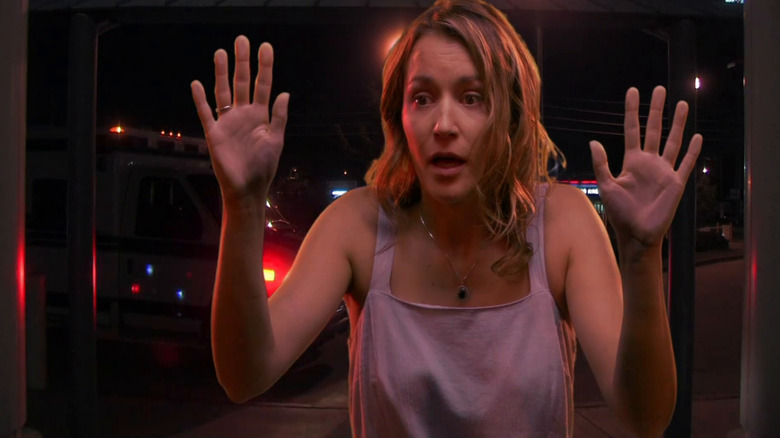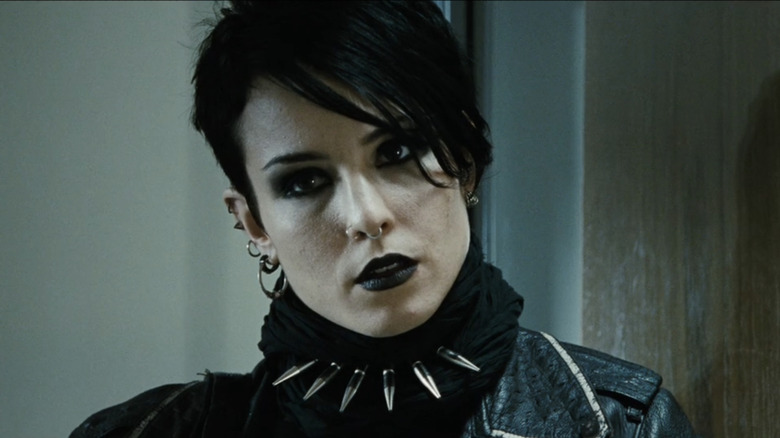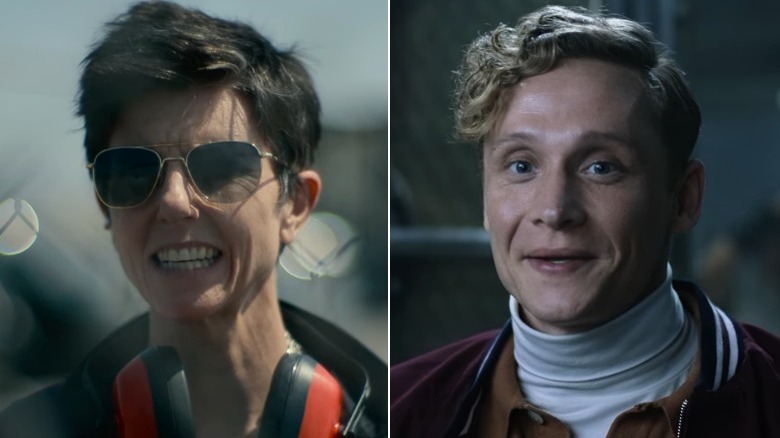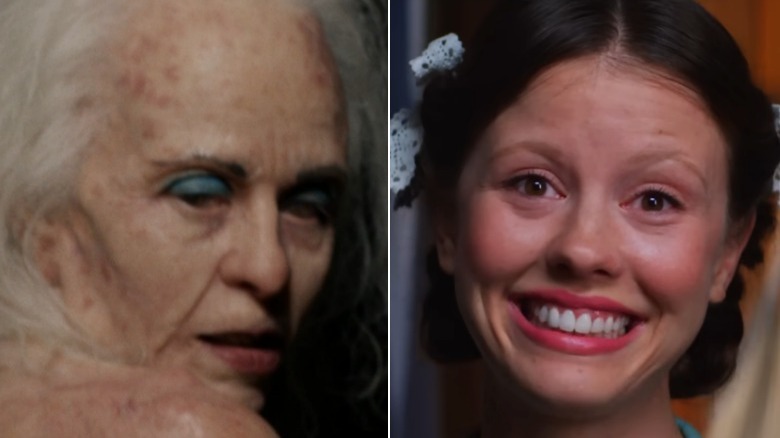12 Times A Franchise Released More Than One Movie Sequel In The Same Year
In our current era of reboots and legacy sequels, it's not unusual for a film sequel to arrive years, if not decades, after the original. Director George Miller spent thirty years among the pigs and penguins before returning to the post-apocalyptic world of Mad Max with 2015's sequel/reboot "Mad Max: Fury Road," while David Gordon Green ignored four decades of horror sequels and declared his 2018 "Halloween" a follow-up to the 1978 original only. But before studios could reliably count on multigenerational intellectual properties — kept relevant through a seemingly inexhaustible amount of audience goodwill — it was generally understood that sequels should strike while the iron was hot. If a film was a success, a sequel needed to happen as soon as possible, and sometimes a sequel could even make it to theaters or home video within a year of the original film's release.
Sometimes a sequel arriving hot on the heels of its original marks it as a blatant cash grab, but there are other circumstances. Occasionally multiple parts of a successful franchise are filmed simultaneously in order to be released within months of each other. Other times the sequels are filmed over several years, but for one reason or another are released together. In extremely rare occasions, the "sequel" is in fact a competing production from a rival studio. Here are twelve examples of times when a film franchise released more than one sequel in the same calendar year.
The Man with No Name trilogy (1967)
There are sticklers out there who will tell you that The Man with No Name — the taciturn anti-hero played by Clint Eastwood in Sergio Leone's trilogy of landmark Westerns — does have a name. In fact, he has three names. In 1964's "A Fistful of Dollars" — wherein our man pits the rival factions of a small frontier town against one another — his name is Joe. In 1965's "For a Few Dollars More," however, his name is Monco and he's a bounty hunter who joins forces with a rival (Lee Van Cleef) to take down a Mexican bank robber. But in the 1966 semi-prequel "The Good, the Bad, and the Ugly," he is called Blondie, racing against a ruthless mercenary (Van Cleef again) and a wily bandit (Eli Wallach) to find a cache of Confederate gold.
In reading those descriptions you might have noticed that Eastwood isn't really the same character in each, nor were they released in the same year. After all three films were hits in Italy and across Europe, United Artists released them across 1967 — the first two in January and May, and "The Good, the Bad, and the Ugly" in December. The artwork for the American releases emphasized that the films were all of a piece, and introduced the moniker "The Man with No Name" in an attempt to bind the films more closely together. The marketing campaign worked like gangbusters, and nearly 60 years later, the three films are still packaged together as "The Man with No Name" trilogy.
Never Say Never Again and Octopussy (1983)
The circumstances that led to both Roger Moore and Sean Connery playing James Bond in 1983 are complicated and go back several decades. In the '50s, Bond author Ian Fleming collaborated with writer Kevin McClory on an unused 007 film script that eventually became the novel "Thunderball." In 1961 McClory sued Fleming and eventually was awarded a story credit on the novel's 1965 film adaptation, as well as ownership of certain story elements — most notably the terrorist organization SPECTRE and its cat-loving leader Ernst Stavro Blofeld (per Variety).
McClory spent more than a decade in various legal battles with United Artists in order to make his own film, and in 1983 he finally got his chance. "Never Say Never Again" — produced for Warner Bros. — is essentially a remake of "Thunderball," with SPECTRE once again holding the world hostage with a pair of nuclear warheads. Its ace in the hole, of course, is Connery, returning to the role he made famous for the first time since 1971's "Diamonds Are Forever," but the film also boasts solid action scenes from director Irvin Kershner and a great performance from Barbara Carrera as scenery-chewing femme fatale Fatima Blush. Meanwhile, the official Bond franchise kept chugging along in the same year with the very silly "Octopussy," which has 007 (Roger Moore in his sixth appearance) foiling a rogue Soviet general and an exiled Afghan prince with the help of a cadre of beautiful circus-trained jewel thieves.
The Toxic Avenger Part II and Part III (1989)
In 1984, the schlockmeisters at Troma Entertainment scored a genuine hit with the superhero parody "The Toxic Avenger," in which wimpy health club janitor Melvin Junko (Mark Torgl) is dumped into a vat of toxic waste and emerges as a hulking, deformed monster (Mitch Cohen) who dedicates himself to fighting crime. Five years later, "the first superhero from New Jersey" returned in "The Toxic Avenger Part II." In the sequel, Toxie (John Altamura in the first scene, Ron Fazio thereafter) travels to Japan to find his long-lost father, leaving Tromaville helpless to the machinations of supervillain corporation Apocalypse, Inc.
The original cut of "Part II" reportedly ran close to four hours, so Troma mastermind Lloyd Kaufman did the only sensible thing and made two movies out of it. "Part III" — subtitled "The Last Temptation of Toxie" — picks up the second half of the story. When Toxie returns from Japan and runs Apocalypse, Inc. out of town, he finds himself despondent that he did his job too well and that there are no more bad guys left in Tromaville to defeat. In need of a job to pay for a medical operation that could restore his blind girlfriend Claire's (Phoebe Legere) sight, Toxie does the unthinkable and takes a job with Apocalypse, Inc. But will success and the trappings of yuppie life spoil our lumpy protector? And is the chairman of the evil corporation (Rick Collins) even more evil than previously advertised?
The Lost World and Return to the Lost World (1992)
Arthur Conan Doyle's 1912 sci-fi novel "The Lost World" posits a land, deep within the jungles of South America, that is untouched by the forces of evolution, where dinosaurs and other prehistoric creatures still tread. 80 years later, a Canadian-Italian co-production (financed by future disgraced Italian Prime Minister Silvio Berlusconi) brought Doyle's fantasy realm to life — albeit in Africa instead of South America. John Rhys-Davies stars as intrepid explorer George Challenger, whose claims of dinosaurs roaming free in the 20th century have made him a laughing stock in the British scientific community. Undeterred, he launches an expedition bankrolled by a plucky heiress (Tamara Gorski), dragging along a Canadian journalist (Eric McCormack) and a rival scientist (David Warner).
The film is nearly half over before we spot our first dinosaur, and for good reason. While Edwardian England has been handsomely recreated by the production, the creature effects are laughably rubberized. A follow-up feature, "Return to the Lost World," was filmed simultaneously. Picking up the story some years later, Challenger and his ragtag crew return to the lost world to foil a Belgian industrialist bent on exploiting the land for its natural resources. Filmed with mostly the same cast, crew, and locations — and covering much of the same narrative ground — the sequel is barely distinguishable from the first film and it even uses the same opening sequence, including Gorski's "Introducing" credit.
Three Colours: White and Three Colours: Red (1994)
Polish filmmaker Krzysztof Kieślowski's "Three Colours" trilogy consists of three films with (mostly) unrelated characters and plots, but united in theme and intended as a singular experience. When U.S. critics were preparing their best-of lists for 1994, the films took up one ranking instead of three. The title of each installment refers to the three colors of the French flag and the ideals represented by each: Blue for liberty, white for equality, and red for fraternity. "Blue" arrived in late 1993, starring Juliette Binoche as a wife and mother who is cruelly "liberated" by the death of her husband and young child. Struck numb by grief, she strikes up an unexpected friendship with her husband's mistress.
"White" and "Red" were both released in 1994. The former concerns an unhappy man (Zbigniew Zamachowski) who gets divorced by his young wife (Julie Delpy) and smuggles himself back home to Poland inside a large suitcase. When he emerges to find himself in a landfill after the suitcase was stolen from the airport and dumped, he breathes a sigh of relief, "Home at last." The latter film follows a model (Irene Jacob) living in Geneva who connects with a retired judge (Jean-Louis Trintignant) after accidentally hitting his dog with her car. Each film — written by Kieślowski and Krzysztof Piesiewicz — has the lean efficiency and finely tuned irony of a good short story, and none of them quite turn out as expected.
The Matrix Reloaded and The Matrix Revolutions (2003)
Arguably no other single film did more to define sci-fi in the 21st century than the Wachowskis' 1999 hit "The Matrix." The dystopian-wuxia-superhero-western mashup coined a whole new cinematic language, and its impact can still be seen in aesthetics, special effects technology, and — perhaps unfortunately — in real life today. A sequel was all but guaranteed, but the task of living up to fans' massive expectations was daunting. Four years after Neo (Keanu Reeves) flew through the air at the end of the first film, the Wachowskis returned with not one sequel but two: "The Matrix Reloaded" in May 2003 and six months later, "The Matrix Revolutions."
The films promised everything a sequel should have — bigger and better action setpieces, more of the characters we loved from the first film — along with a few things specific to this franchise, like answers to the many questions posed by its increasingly convoluted mythology. But while the sequels could deliver the goods when it came to action — the highway motorcycle chase in "Reloaded" remains an all-timer 20 years later — it fared less well when trying to untangle its own dorm-room philosophical inquiries into the nature of reality and free will. "Revolutions" was largely seen as a disappointing capper to the trilogy, and when Lana Wachowski returned 18 years later to helm the reboot "The Matrix Resurrections," it seemed as much to craft a proper ending as it was to start a new beginning.
Ginger Snaps 2: Unleashed and Ginger Snaps Back: The Beginning (2004)
The 2000 Canadian horror flick "Ginger Snaps" took on the werewolf genre by way of Stephen King's "Carrie" — viewing lycanthropy through the lens of female adolescence and puberty — as spooky teen sisters Ginger (Katharine Isabelle) and Brigitte (Emily Perkins) work to control Ginger's violent monthly urges after she is bitten by a werewolf. The 2004 sequel "Ginger Snaps 2: Unleashed" takes a page from "A Nightmare on Elm Street Part 3" as Brigitte, now infected herself, tries to resist her transformations while doing time in a rehab facility for teens. Isabelle returns as Ginger, appearing to Brigitte in visions and offering ghostly advice, while a very young Tatiana Maslany co-stars as a fellow patient who may have her own reasons for wanting a werewolf for a best friend.
Filmed simultaneously with "Unleashed," the prequel "Ginger Snaps Back: The Beginning" offers a frontier variation on the series. Isabelle and Perkins return not as the Ginger and Brigitte we know and love from the first two films, but as their 19th-century ancestors (also named Ginger and Brigitte), who find themselves orphaned and lost in a Canadian wilderness teeming with white fur trappers, Cree hunters, and monsters galore. Where werewolves are a symbol for menstruation in the first film and addiction in the second, "Ginger Snaps Back" uses the genre's sturdy framework to examine Canada's history of colonialism and indigenous extermination.
Return of the Living Dead: Necropolis and Return of the Living Dead: Rave to the Grave (2005)
The tongue-in-decaying-cheek "Return of the Living Dead" series ran for three bloody, campy entries from 1985 to 1993. But just like a corpse exposed to the military-grade poison gas Tryoxin (or Trioxin, depending on the film), the series rose from the grave more than a decade later — perhaps spurred on by the success of Zack Snyder's 2004 "Dawn of the Dead" remake. In 2005, two brand new "Return of the Living Dead" sequels were inflicted upon the world, putting a new generation of teens in the path of shambling corpses hungry for "Braaaaaains!"
"Necropolis" — the first of the new sequels — stars Aimee-Lynn Chadwick and Cory Hardrict as a couple of high school students whose friend (Elvin Dandel) is kidnapped by a nefarious corporation doing research on reanimated bodies. Peter Coyote guest stars as the doctor in charge of the experiments, and he appears again in the follow-up, "Rave to the Grave." Taking place a year after the zombie outbreak that ended "Necropolis," the sequel follows the surviving high schoolers — now in college — as a stray canister of Trioxin gets synthesized into a party drug and starts turning ravers into zombies. Beyond using Trioxin as the source of the zombie scourge, the films — which wound up going straight to the Syfy Channel — bear little resemblance to the first three, lacking their punk rock sensibility and love for gooey, goopy monsters.
Pulse 2: Afterlife and Pulse 3 (2008)
Kiyoshi Kurosawa's "Pulse" from 2001 was part of a wave — alongside "The Ring" and "The Grudge" — of internationally acclaimed Japanese spine-tinglers released at the turn of the millennium. Its inevitable American remake — directed by Jim Sunzero and co-written by Wes Craven — arrived in theaters in 2006 and starred Kristen Bell as a university student who discovers that her boyfriend's death was caused by a computer virus that allows the dead to contact the living through cell phones and the internet. Like the Japanese original, the remake has the courage of its convictions, ending on a note of defeat as the virus takes hold and the spirits of the dead invade the earth.
Writer-director Joel Soisson's two "Pulse" sequels, both released in 2008, take place in a world overrun with ghosts, where the living now exist as refugees in their own homes, more resembling zombie films than either Kurosawa's original or the remake. "Pulse 2: Afterlife," starring Jamie Bamber and Boti Bliss as a couple trying to protect his daughter from the ghost of his vengeful ex-wife (Georgina Rylance), is nearly unwatchable — with every scene appearing to have been filmed in front of a green screen. "Pulse 3" has a slight edge visually, but fares no better otherwise, with Rider Strong starring as a college student navigating the blighted post-technology landscape and Brittany Finamore as a young woman who somehow discovers the world's last working laptop.
The Millennium trilogy (2009)
Swedish crime writer Stieg Larsson's posthumously released "Millennium" trilogy became a global sensation when the first novel, "The Girl with the Dragon Tattoo" was published in English in 2008. A feature film adaptation from Swedish production company Yellow Bird followed in early 2009, along with adaptations of the other two novels in the series, "The Girl Who Played with Fire" and "The Girl Who Kicked the Hornets' Nest" later in the year. The complete trilogy was given a limited theatrical run in the United States in 2010 by the distribution arm of Chicago's Music Box Theater.
Starring Noomi Rapace as hacker Lisbeth Salander and Michael Nyqvist as intrepid journalist Mikael Blomkvist, the films are a pitch-black journey into the sins of Sweden's past — and for international audiences, possibly their first taste of the uniquely dark, sexy, and disturbing genre of Scandinavian crime fiction. Directors Niels Arden Oplev and Daniel Alfredson (who helmed the last two films) don't shy away from the sexual violence that is endemic to Larsson's work — the original Swedish title of "The Girl with the Dragon Tattoo" translates to "Men Who Hate Women," after all. And while the sequels may not have the same visceral thrill as the first film, all three come together to paint a bleak portrait of a culture that has yet to reckon with the rottenness at its core.
Army of the Dead and Army of Thieves (2021)
Spin-off films are a tricky thing, especially when planned in advance and counting on the audience falling in love with a specific character or actor. Take, for example, Zack Snyder's 2021 Netflix heist thriller "Army of the Dead." A genre mishmash with bits borrowed from "Ocean's Eleven" and the original "Dawn of the Dead," the film follows a group of hardened mercenaries led by Dave Bautista on a mission to recover $200 million from the vault of an abandoned Las Vegas casino. The twist, however, is that the casino was abandoned because Vegas was ground zero for a zombie plague years earlier. Teeming with undead showgirls and high-roller corpses, the city is walled off and the government plans to nuke it — destroying any riches that may be left behind.
While the film was in production, Snyder was already hard at work on an animated series subtitled "Lost Vegas" and a spin-off centered around German actor Matthias Schweighöfer's twitchy safecracker Dieter. "Army of Thieves," a spirited but unnecessary prequel showing how Dieter went from a meek locksmith to a master thief, premiered on the streaming service five months after "Army of the Dead." Perhaps Dieter was meant to be the film's breakout supporting character, but that idea went out the window when Snyder cast comedian Tig Notaro as the team's wisecracking helicopter pilot — inserting her digitally into footage originally filmed with disgraced stand-up Chris D'Elia (via Vanity Fair). The unexpected-but-perfect casting caused an online sensation, and if Snyder and company had waited a little longer, they may have realized that the franchise's first spin-off was highlighting the wrong character.
X and Pearl (2022)
Writer-director Ti West's breakthrough film was the 2009 '80s horror pastiche "The House of the Devil." Though he has done a lot of work in the years since — both as an auteur and as a hired gun — his sensibilities have never strayed too far from the proverbial video store. In the 2022 horror film "X," West takes aim at the skin and grime of '70s exploitation films, particularly Tobe Hooper's seminal "The Texas Chainsaw Massacre." Set in 1979, "X" sees an independent film crew renting a rural Texas farmhouse to shoot a porno, but their presence awakens bloodthirsty urges in the house's elderly owners. West assembled a truly oddball cast, including Brittany Snow, rapper Kid Cudi, and Jenna Ortega as the film crew, along with Mia Goth in a dual role as would-be starlet Maxine, and Pearl — the murderous old woman who becomes fixated on her.
Shooting in New Zealand in 2021, West and his crew were subject to a two-week quarantine for covid-19, and in that fortnight he and Goth wrote an entire prequel script and sold it to studio A24 (via LA Times). "Pearl" — the demented origin story of the villain in "X" — was shot back-to-back with the first film on many of the same sets, and with crew on loan from "Avatar: The Way of Water." Goth once again plays Pearl, this time as a young woman in 1918, desperate to become a Hollywood star but suffocating under the roof of her strict German immigrant parents. West trades in the lo-fi 16mm look of "X" for something closer to a mid-century Technicolor musical, but his greatest effect is Goth's sympathetic and unsettling performance.
